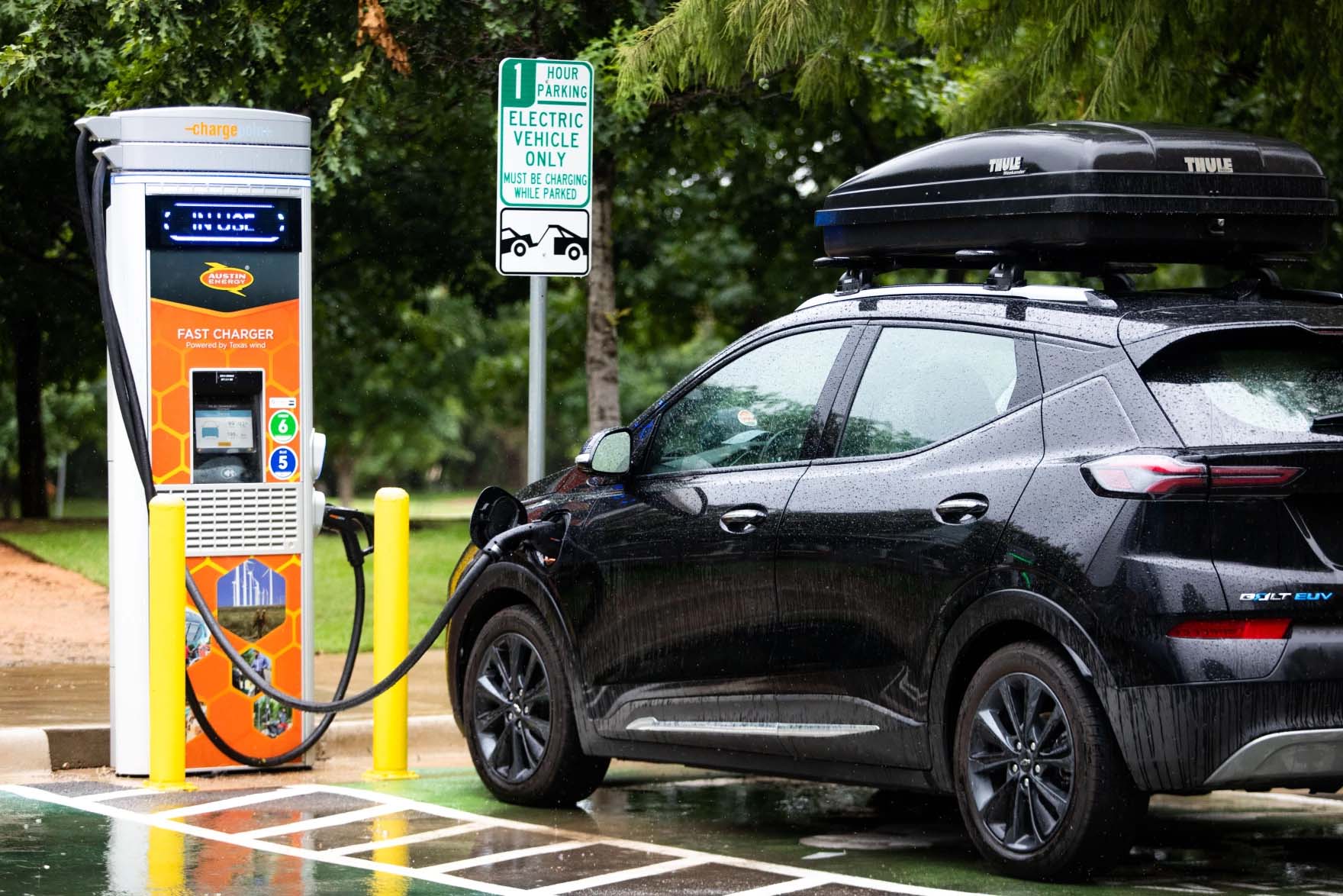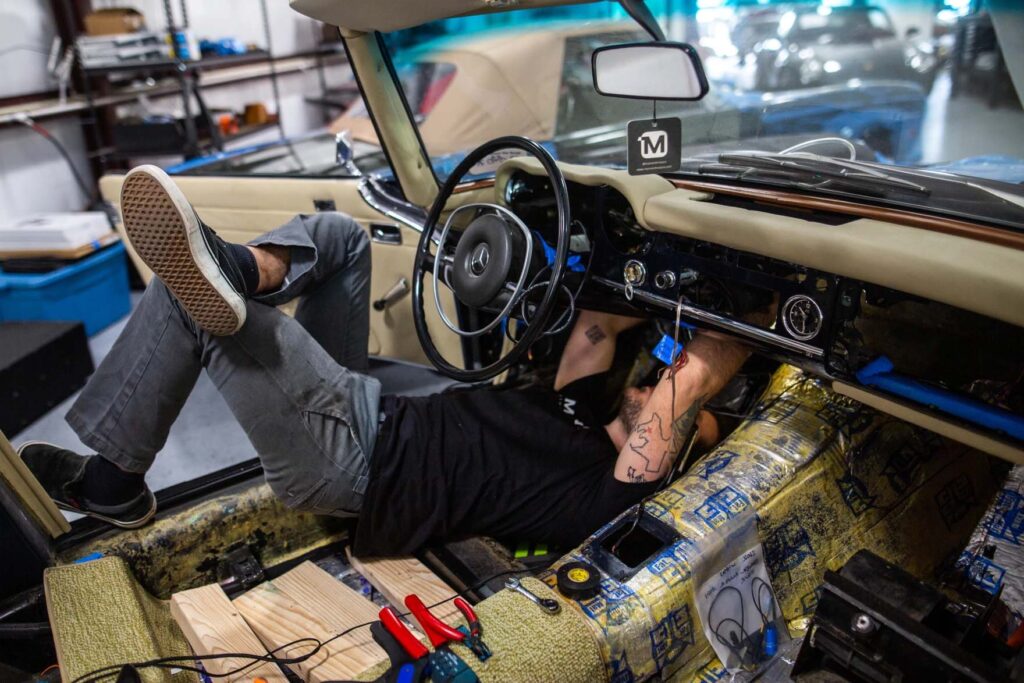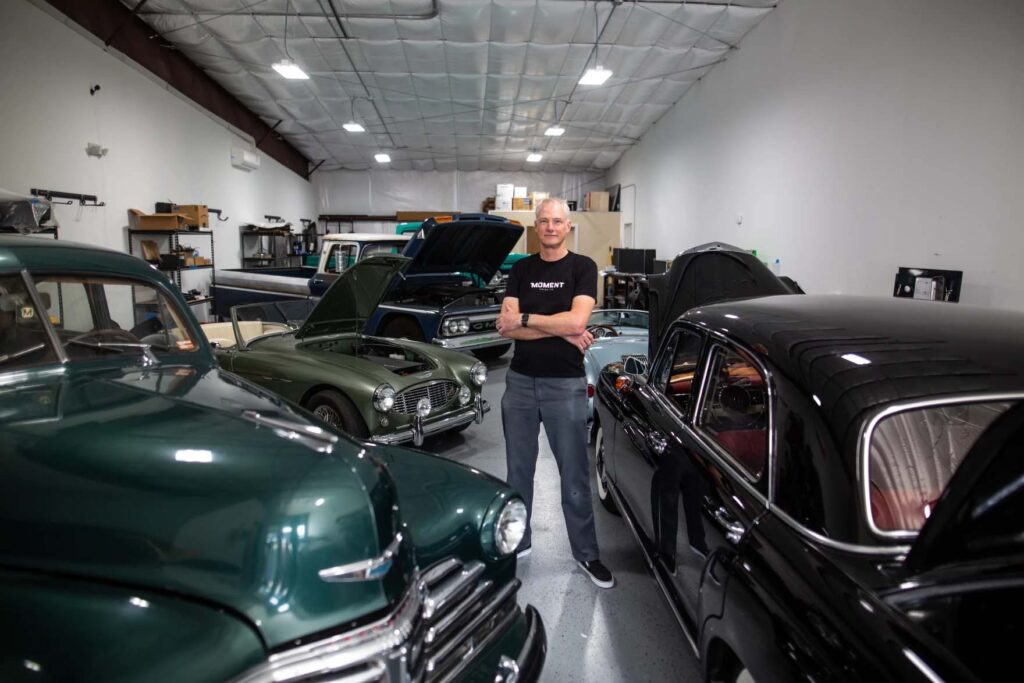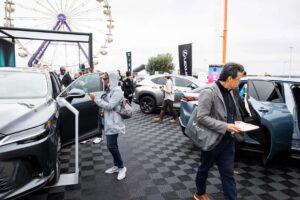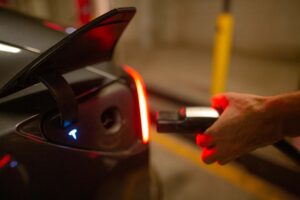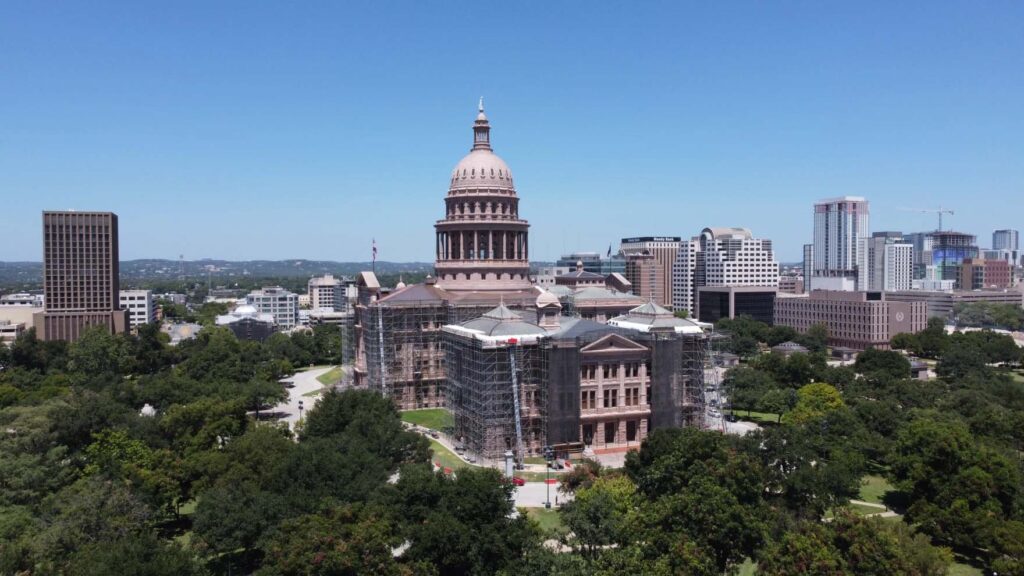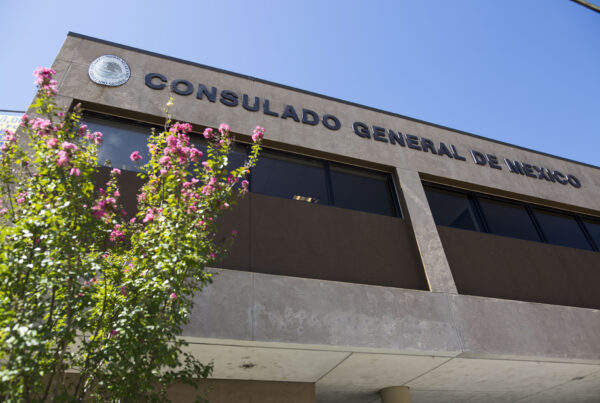From KUT:
Austin is leading the shift to electric vehicles in Texas.
More than 2.1% of registered vehicles in Travis County are now battery-powered cars and trucks, registration data obtained through the Texas Public Information Act shows. The number doesn’t include hybrids. Travis County’s EV adoption rate is the highest of the five biggest counties in the state.
More than half of the EVs on Austin’s roads are Teslas, Austin Energy says. The electric vehicle giant is based in Travis County.
A 2% adoption rate might not sound like much, but it signals “a big change that happened recently,” said Gil Tal, a leading expert on electric vehicles who runs a research center on EVs at the University of California, Davis.
For comparison, California — which leads the nation in electric vehicle adoption — is nearing a 3% EV ownership rate. The state has spent heavily to promote EVs and plans to ban the sale of new gasoline-only vehicles by 2035.
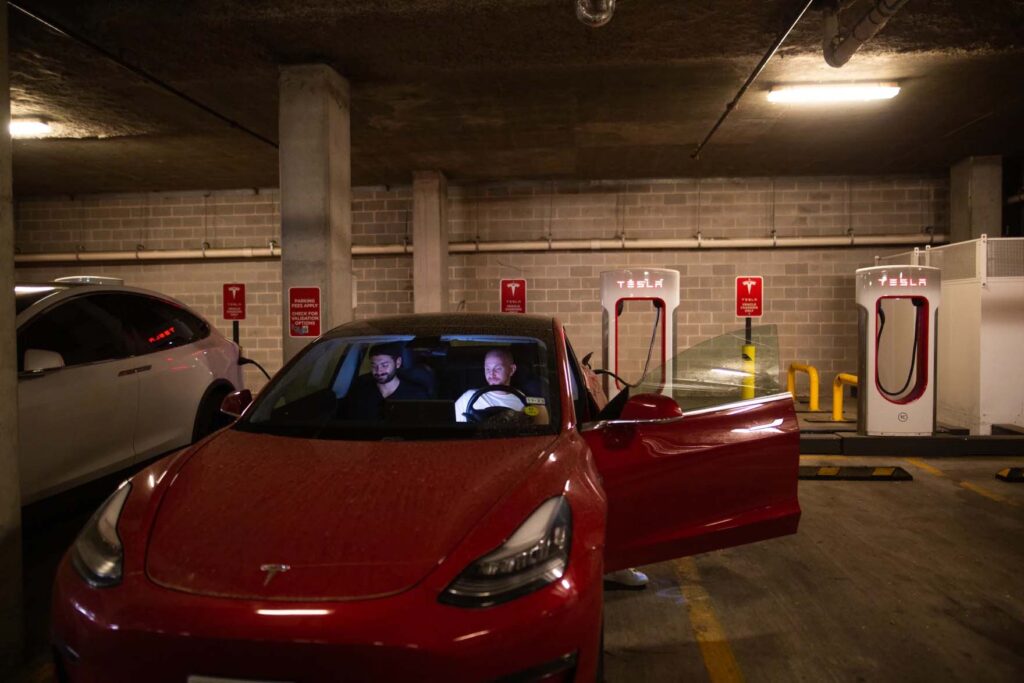
Nick Allen and Davide Bonatti wait in a Tesla charging spot in a parking garage on South Congress Avenue. Tesla is by far the most popular electric vehicle in Austin, accounting for more than half the EVs on the roads.
Jessie Curneal / KUT
Williamson County is not far behind Travis. More than 1.5% of registered vehicles are electric in the county, and residents have been snapping up EVs at a faster clip. For example, more than 5% of Williamson County’s new vehicle registrations in September were electric. In Travis County, it was 3%.
Hays County has been slower to shift to electric vehicles. Records show 0.8% of cars and trucks in Hays County are powered by batteries.
In the state’s largest population centers — the counties where Houston, Dallas, Fort Worth and San Antonio are located — EVs account for less than 1% of vehicles on the road, Texas Department of Motor Vehicles data show.
By absolute numbers, Travis County was in a virtual dead heat with Harris County for the most electric vehicles in Texas. Each had around 20,000. But Harris County has 3.4 million registered cars and trucks, more than three times the number in Travis County.


